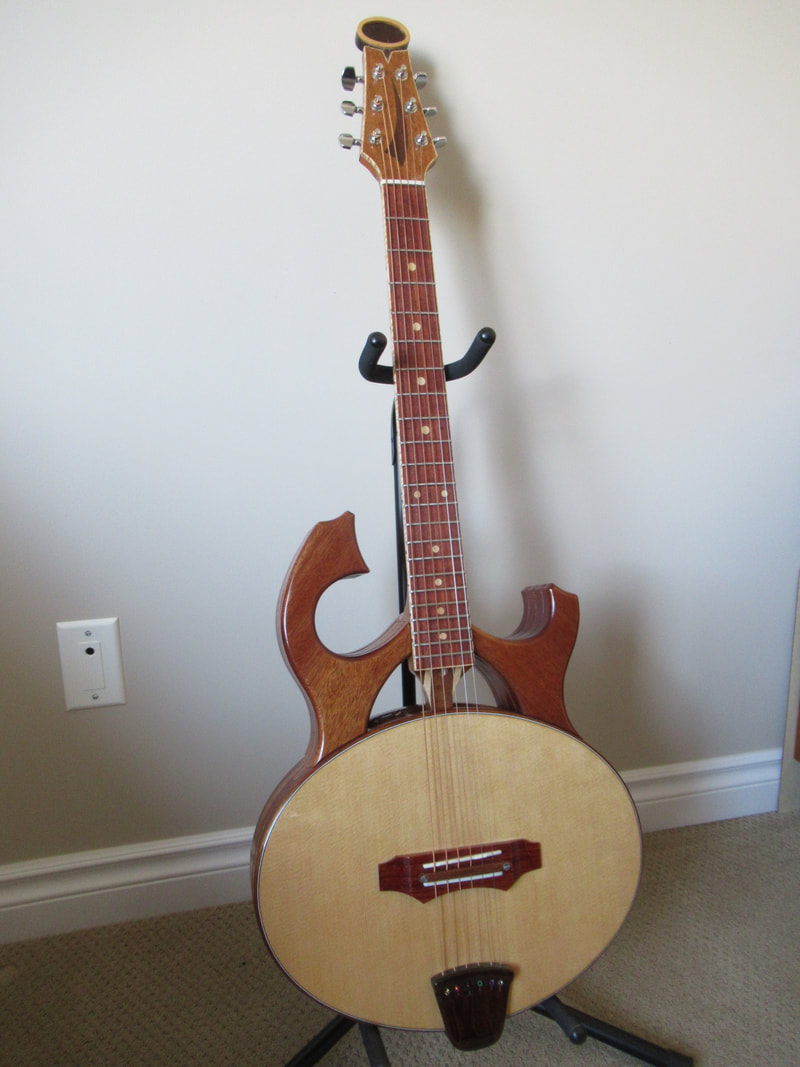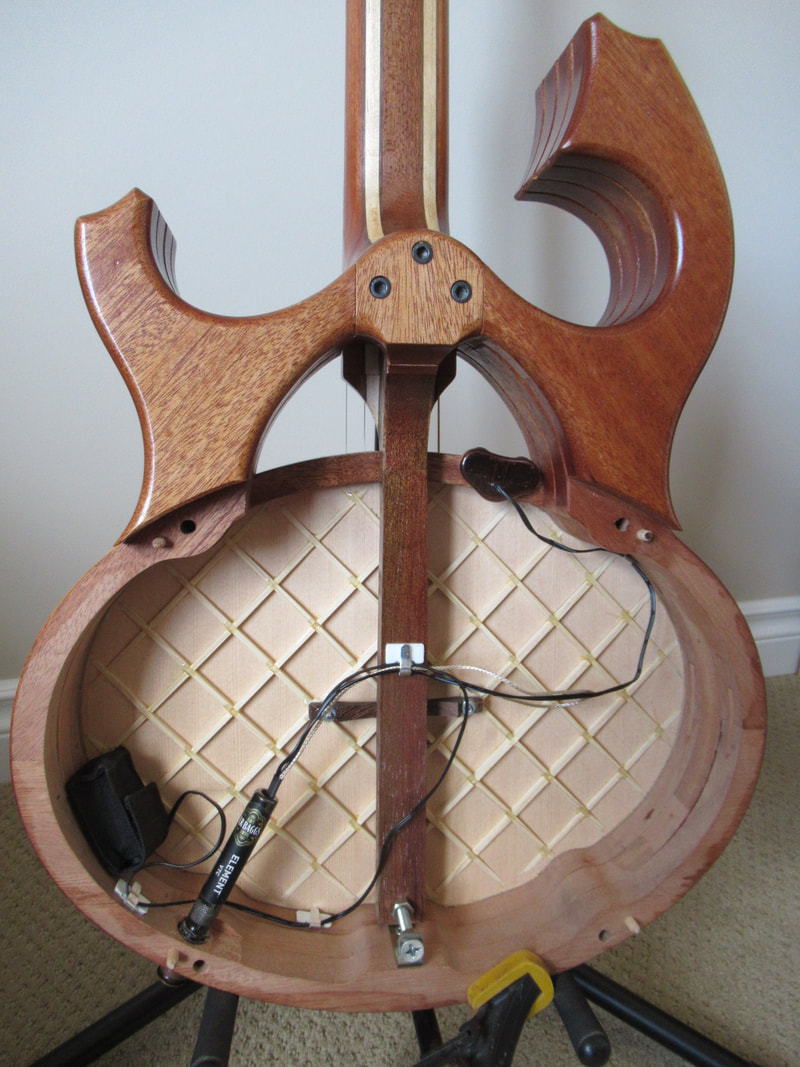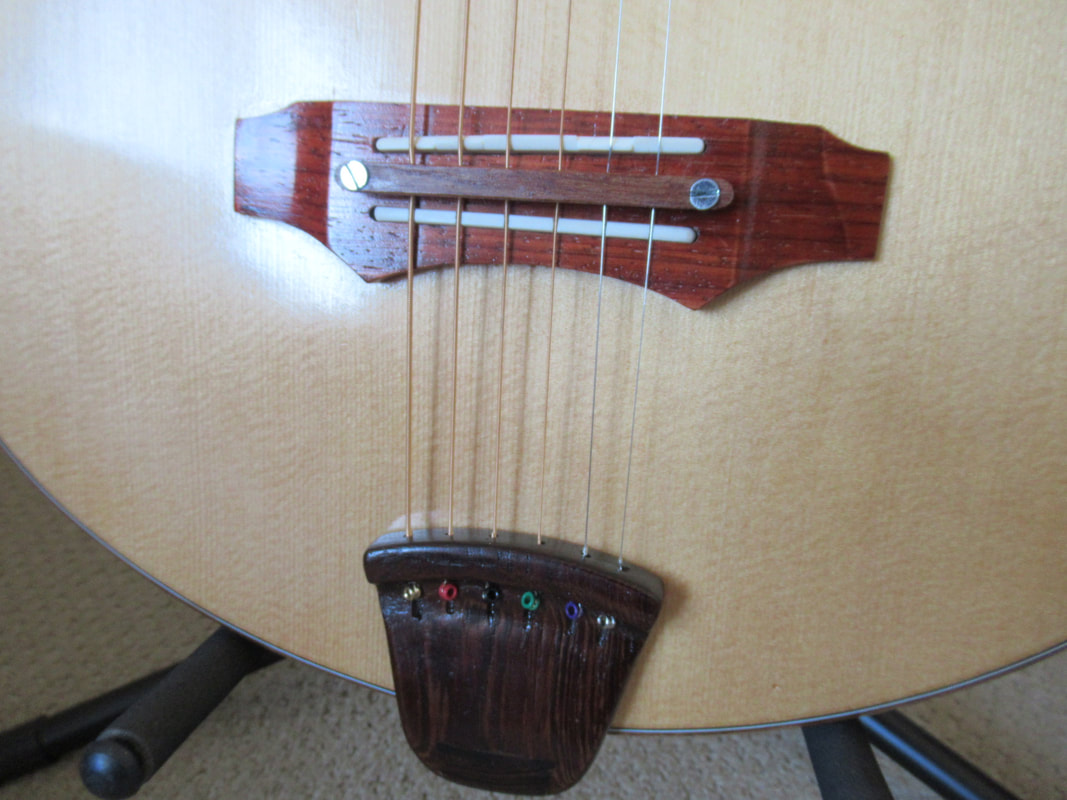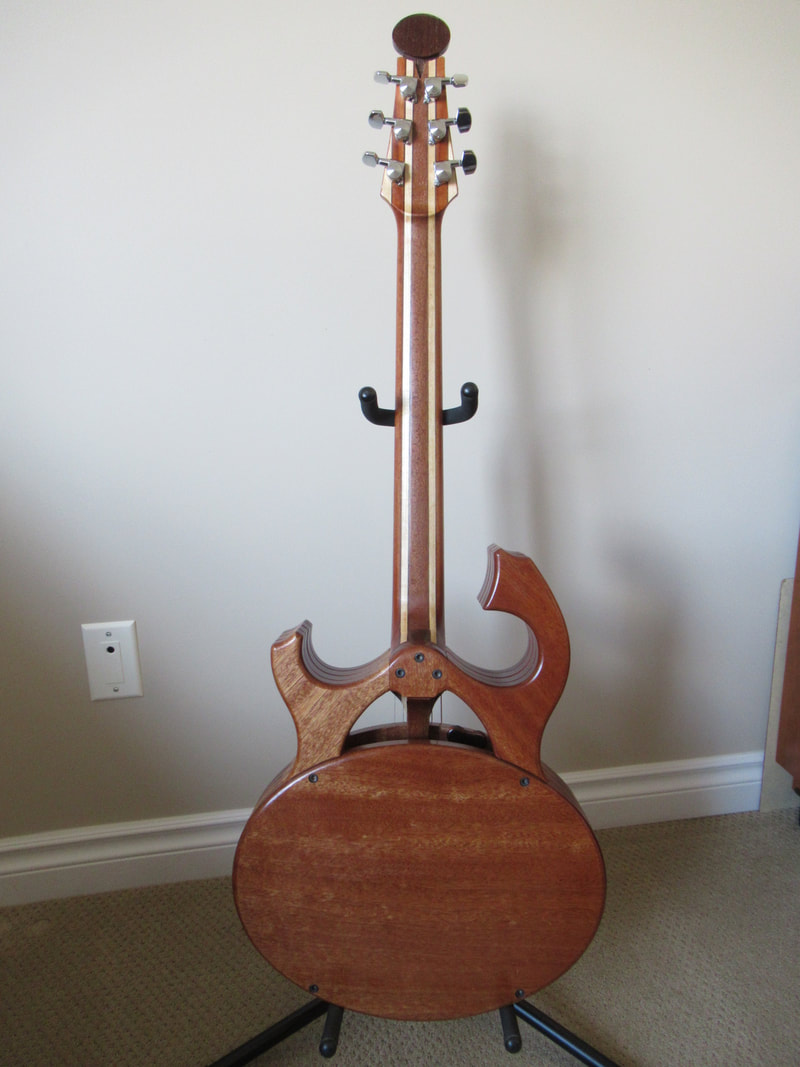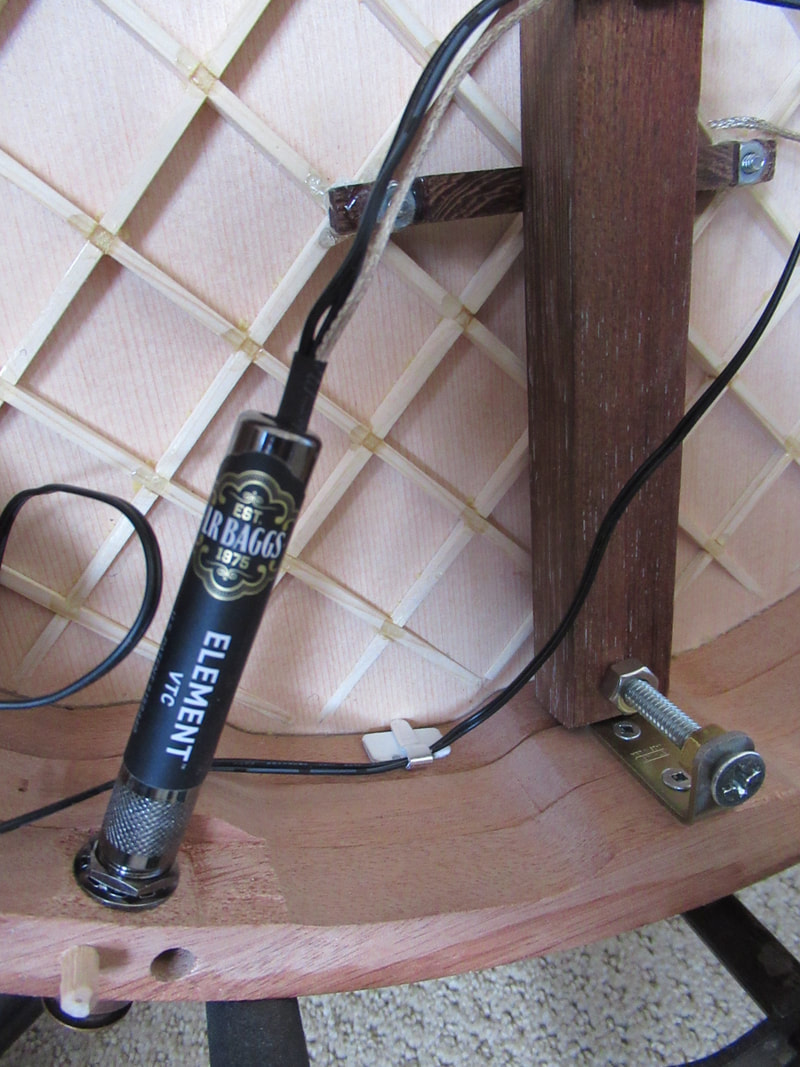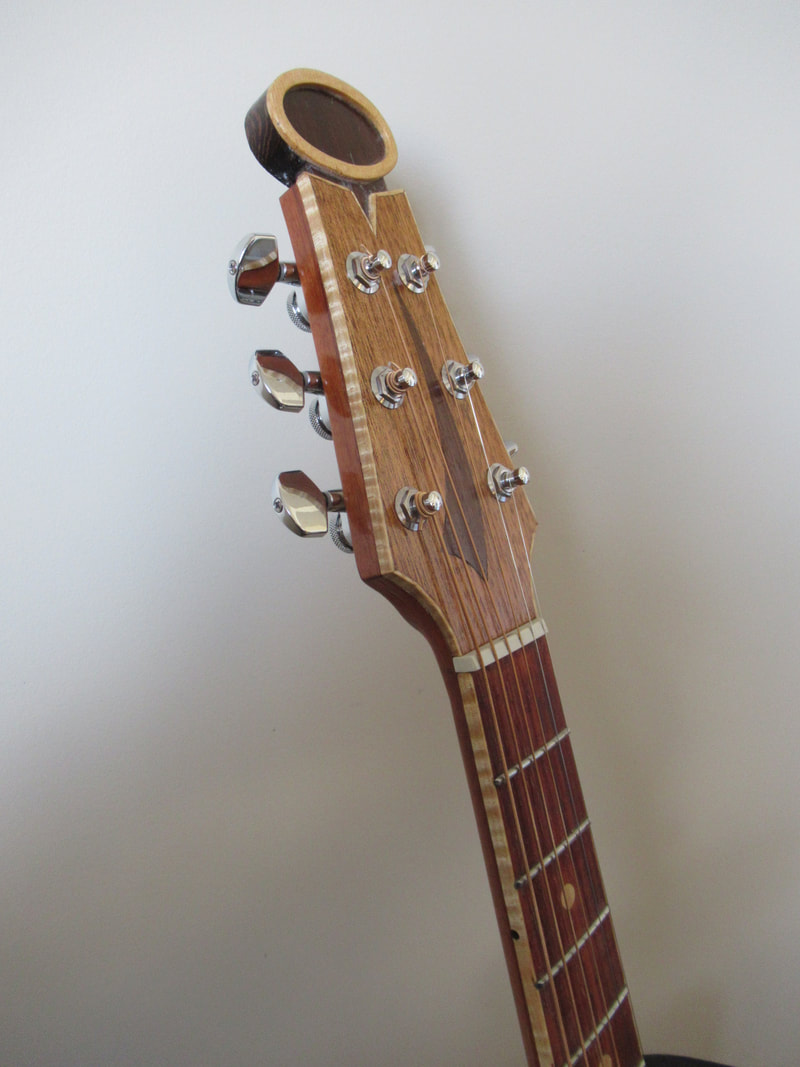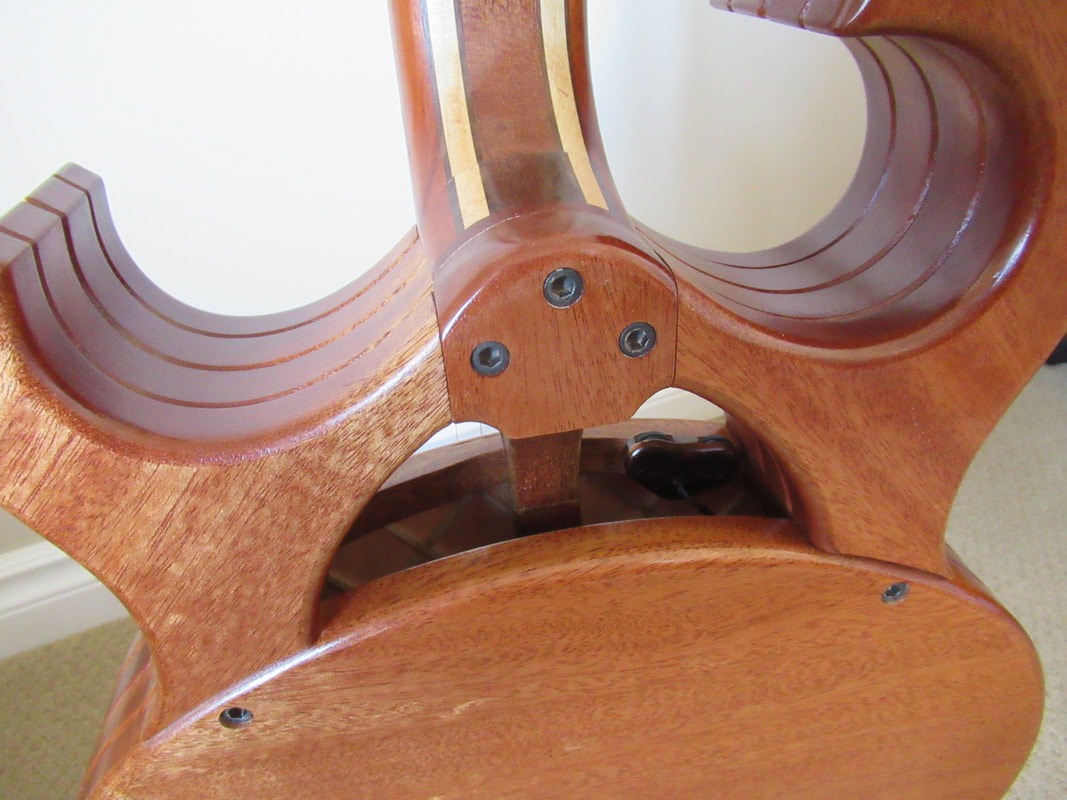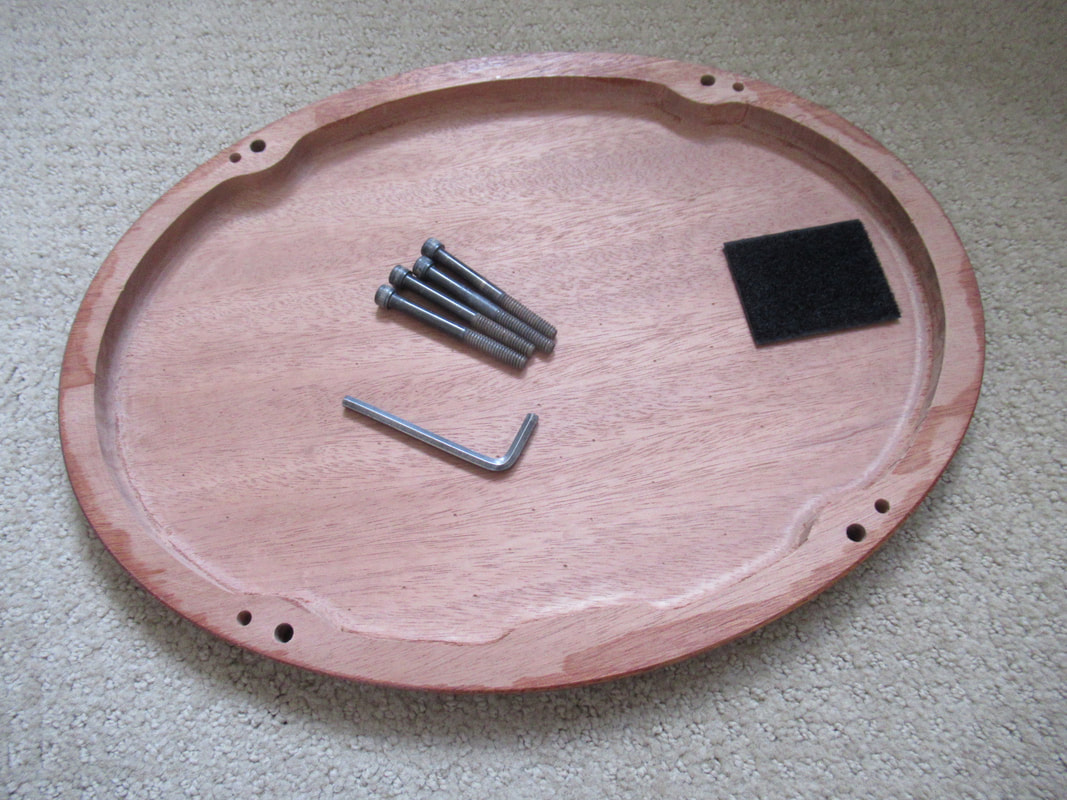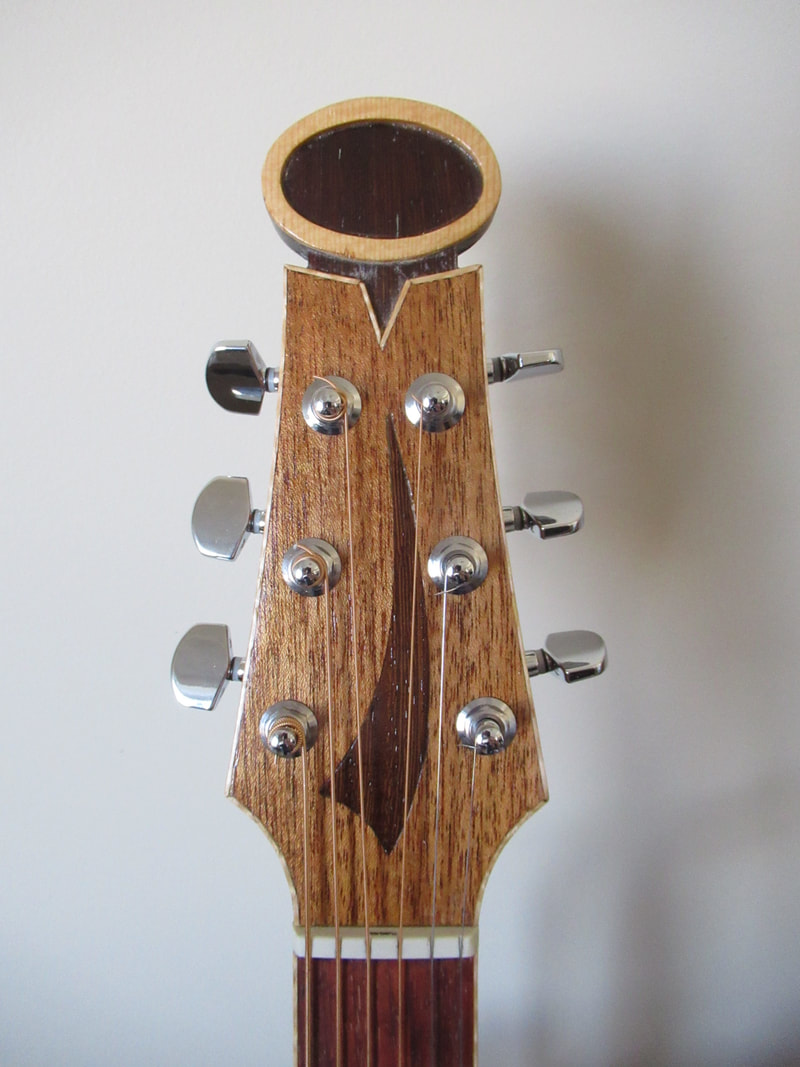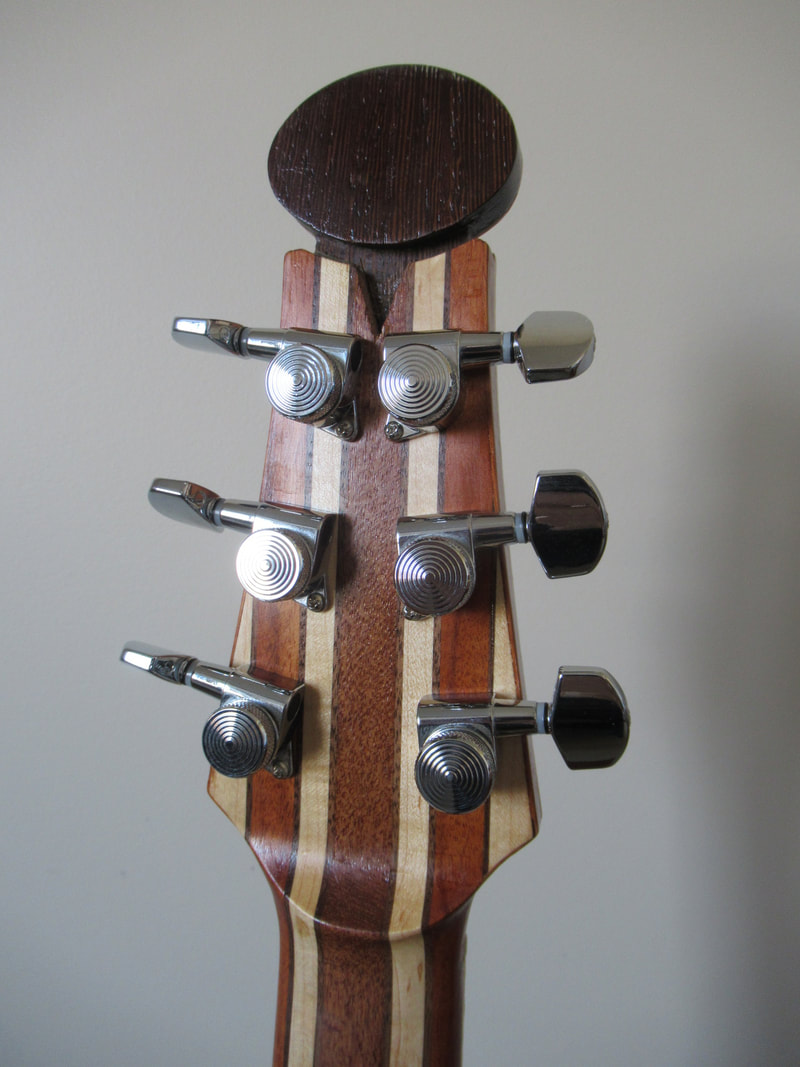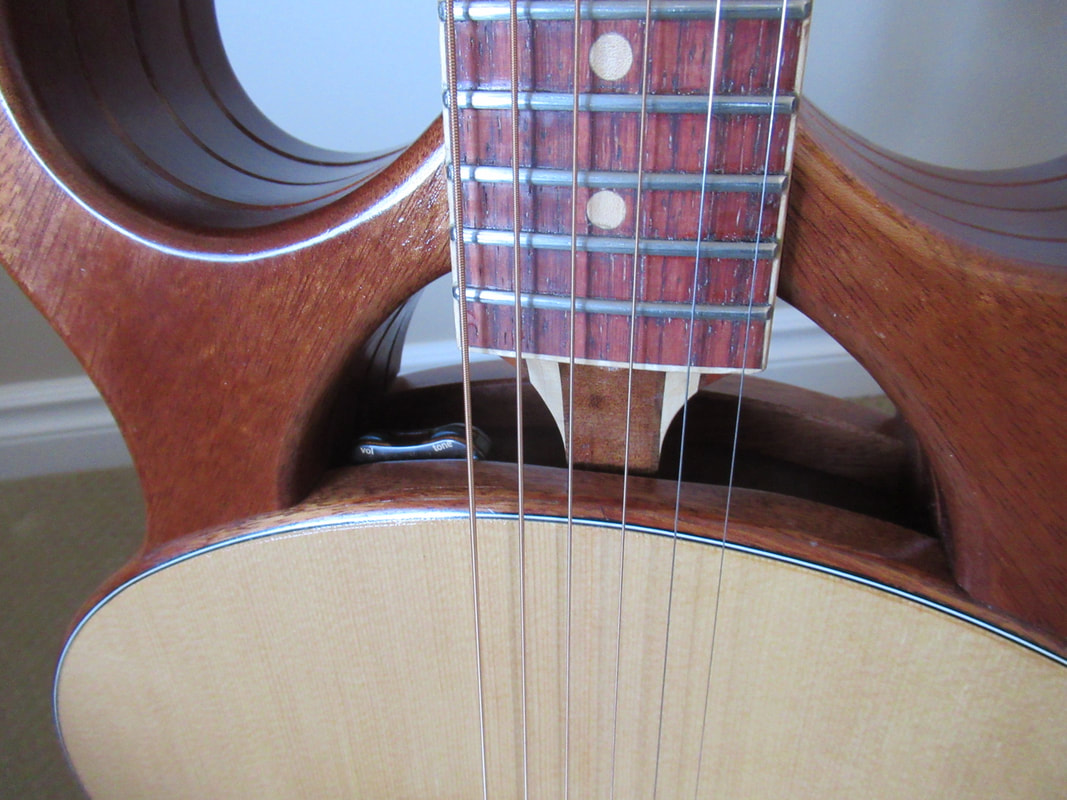The "Ovalution"
I built this acoustic/electric guitar based on the "Smoothtalker" designed and built by Mervyn Davis, a luthier from South Africa. I decided to call mine "The Ovalution" because it is oval and revolutionary.
|
It has a similar over-all shape to a regular acoustic guitar but only the lower bout is the sound chamber. The upper bout (not really a bout) serves three purposes as I see it, to structurally support and hold the neck to the body, to give it a more balanced and recognizable over-all shape, and provide a place to attach a strap (if you need one).
The neck is a multi-laminated "through-neck" design, a portion of which passes through the sound chamber to the tail end and I fitted a mechanism there to allow the action to be adjusted by tilting the neck and without removing the strings.
The bridge design is quite unusual having two saddles, one each side of an adjustable compression bar and the bridge and front saddle is positioned and shaped for correct intonation. This design puts minimum stress on the soundboard allowing for maximum freedom of movement. Strings are held in a tailstock that does not contact the soundboard, again to minimize applied stress. The nut and bridge saddles are "Tusq" synthetic bone material and my opinion is that they do improve the sound.
|
The oval sound chamber is approximately 365 mm wide, 280 mm high and 80 mm deep. Sound exits through the opening at the end, where the neck attaches. I chose a 25 inch (635 mm) scale length and found the fret spacing details on the internet. In spite of its small size, it has great natural sound volume, projection and sustain. The multi-laminated neck has a tapered Ipe central strip flanked by Maple and Mahogany strips to the outsides, all separated by Wenge veneers.
The soundboard was strengthened using a lattice bracing. I installed a L.R. Baggs "Element VTC" piezo pickup under the intonated saddle and it has a pre-amp built into the jack-plug assembly. The volume and tone controls are mounted by the sound hole just above the bass E string.
The fretboard and bridge are made from Padauk and the tailstock is made from Wenge. I used a Sapele/Mahogany veneer on the face of the headstock and a Wenge inlay flash. The fretboard and headstock have a quilted Maple binding accent. Fretboard markers are Maple on the face and Wenge on the edge.
|
The body is bolted together using cap-screws and this allows me to take it apart and re-assemble it easily. The neck is also bolted to the body. I have installed a dual action truss rod which is adjustable at the sound chamber end. Parts have been hollowed out internally, where I could, to help reduce the weight but still provide strength.
I used Next Gen locking tuners, modeled after the modern Schaller style body and locking wheel.
The main body parts are made from Sapele (African Mahogany) The top is made from Sitka Spruce, book matched and sanded down to 1.5 mm (0.060") before adding the lattice bracing of the same material.
|
Since this was my first guitar, I was learning just about everything about the order of construction and I certainly did some things out of the correct sequence. I didn't follow any particular plan of design, dimensions, thicknesses of materials or soundboard bracing. It was all based on my judgement and comparisons to another acoustic guitar that I own. I drew the design out on a sheet of plywood and was able to cut some templates from that, as I have done when building some of my furniture pieces. I was apprehensive when I first installed the strings and tuned it up but it sounded like a bell, crisp clear sound with great volume, projection and sustain. The bass sound is a lot clearer than my other acoustic and the sustain is also a lot more noticeable. Building a guitar was more for the woodworking experience than for the music aspect but I learned a lot along the way and if I ever build another one I have some reference points to work with.
